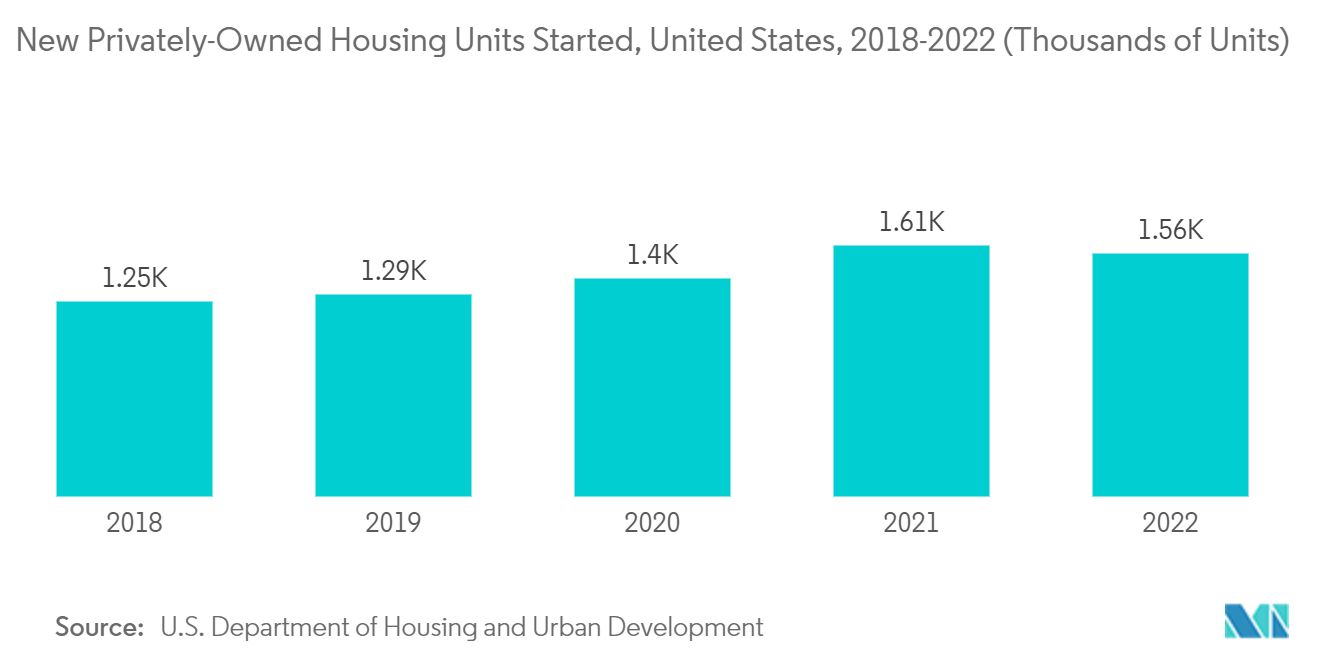Market Trends of Phenolic Resin Industry
This section covers the major market trends shaping the Phenolic Resin Market according to our research experts:
Increasing Demand for Molding Applications is Driving the Phenolic Resin Market
- Phenolic resins are utilized for their properties, including fire resistance, high elasticity, surface hardness, chemical resistance, and electrical insulation.
- Molding applications are projected to be the fastest developing sector due to the chemical resistance provided by phenolic resins in high temperatures or aggressive environments.
- Due to its high elasticity, heat resistance, and dimensional stability, the increasing demand for molding applications of phenolic resins for various purposes, including abrasive grinding wheels, friction linings, and refractory products, is driving market growth.
- Molding components are widely used in various end-user industries, including household appliances, automotive commutators, and electrical and electronic components. The compounds are used to manufacture electrical equipment and kitchenware, which will increase the demand for molding resins due to their excellent dimensional stability.
- The worldwide industry revenue of consumer electronics in 2022 surpassed USD 1 trillion, a more than 10% increase from the last five years, and it is expected to surpass USD 1.1 trillion by 2025. Additionally, the global household appliances industry generated nearly USD 640 billion in 2022 and is expected to surpass USD 780 billion by 2027.
- Government support to cultivate local assembling exercises is driving the interest in phenolic resins in the building and construction sector. Moreover, these resins are widely used in household applications, electrical and electronics, compression, and injection molded parts for the oil and gas industry.
- All the aforementioned factors are expected to drive the phenolic resin market during the forecast period.

The Asia-Pacific Region to Dominate the Market
- Asia-Pacific is expected to witness the highest growth rate due to the high consumption of phenolic resins from consumer electronics, transportation, furniture, building and construction, and oil and gas in China and India.
- The transportation and automotive industry segment accounts for the largest share of the phenolic resin market. Transportation business across Asia-Pacific to drive the rubber industry, in turn driving the demand for the market studied.
- The legislation issued in several countries of the Asia-Pacific region to construct energy-efficient buildings has complemented the overall demand for phenolic resins, thereby resulting in the rapid progression of the phenolic resins market.
- For instance, in March 2021, the Singapore government launched the Singapore Green Building Masterplan (SGBMP), which targets achieving 80% of all buildings as green by 2030. At the end of 2021, 49% of all Singapore's buildings had been greened.
- Global phenol demand amounted to about 12 million metric tons in 2022, which resulted in a 2.5% average annual increase over the last five years.
- Furthermore, increasing application in adhesives and insulation will increase the demand for phenolic resins in the building and construction end-user industry. The increasing construction activities in China, India, and Southeast Asia will increase market concentration in Asia Pacific over the coming years.


